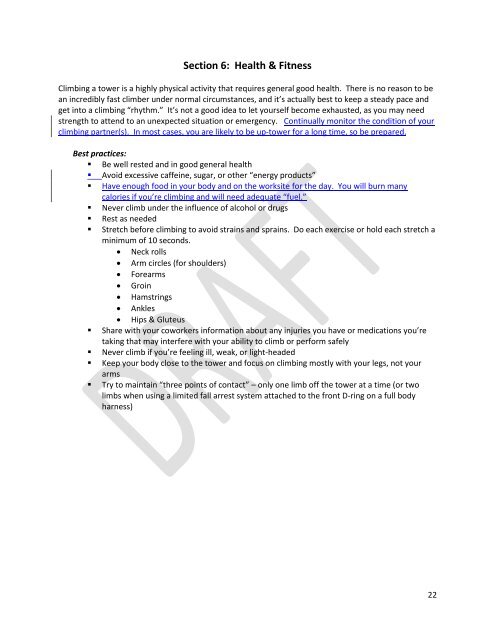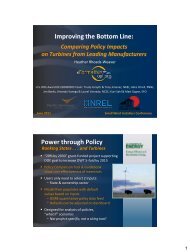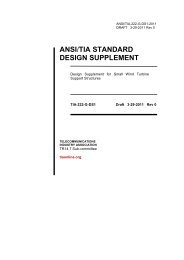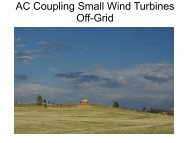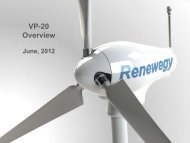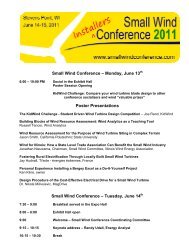Best Practices in Small Wind: Tower Climbing Safety
Best Practices in Small Wind: Tower Climbing Safety
Best Practices in Small Wind: Tower Climbing Safety
Create successful ePaper yourself
Turn your PDF publications into a flip-book with our unique Google optimized e-Paper software.
Section 6: Health & Fitness<br />
Climb<strong>in</strong>g a tower is a highly physical activity that requires general good health. There is no reason to be<br />
an <strong>in</strong>credibly fast climber under normal circumstances, and it’s actually best to keep a steady pace and<br />
get <strong>in</strong>to a climb<strong>in</strong>g “rhythm.” It’s not a good idea to let yourself become exhausted, as you may need<br />
strength to attend to an unexpected situation or emergency. Cont<strong>in</strong>ually monitor the condition of your<br />
climb<strong>in</strong>g partner(s). In most cases, you are likely to be up-tower for a long time, so be prepared.<br />
<strong>Best</strong> practices:<br />
� Be well rested and <strong>in</strong> good general health<br />
� Avoid excessive caffe<strong>in</strong>e, sugar, or other “energy products”<br />
� Have enough food <strong>in</strong> your body and on the worksite for the day. You will burn many<br />
calories if you’re climb<strong>in</strong>g and will need adequate “fuel.”<br />
� Never climb under the <strong>in</strong>fluence of alcohol or drugs<br />
� Rest as needed<br />
� Stretch before climb<strong>in</strong>g to avoid stra<strong>in</strong>s and spra<strong>in</strong>s. Do each exercise or hold each stretch a<br />
m<strong>in</strong>imum of 10 seconds.<br />
� Neck rolls<br />
� Arm circles (for shoulders)<br />
� Forearms<br />
� Gro<strong>in</strong><br />
� Hamstr<strong>in</strong>gs<br />
� Ankles<br />
� Hips & Gluteus<br />
� Share with your coworkers <strong>in</strong>formation about any <strong>in</strong>juries you have or medications you’re<br />
tak<strong>in</strong>g that may <strong>in</strong>terfere with your ability to climb or perform safely<br />
� Never climb if you’re feel<strong>in</strong>g ill, weak, or light-headed<br />
� Keep your body close to the tower and focus on climb<strong>in</strong>g mostly with your legs, not your<br />
arms<br />
� Try to ma<strong>in</strong>ta<strong>in</strong> “three po<strong>in</strong>ts of contact” – only one limb off the tower at a time (or two<br />
limbs when us<strong>in</strong>g a limited fall arrest system attached to the front D-r<strong>in</strong>g on a full body<br />
harness)<br />
22


